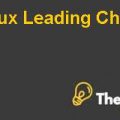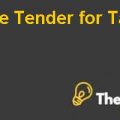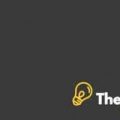
Technological factors
First technology provides numerous benefits to firm's incorporate web 2.0 and e-commerce features into its website. As noted earlier, Web 2.0 technology holds enormous potential for organizations that incorporate it in their websites. Hotels always looking for ways to improve their relationship with customers’, as well as effectively conduct marketing. Web 2.0 makes the clients’ active participant in the advertisement process. When clients share their travel stories, the stories become more convincing to potential clients to visit the destinations, as well as use the hotel services. On the other hand, the potential internet and e-commerce have to compliment every part of an organization is unquestionable. It helps increase e-distribution, thus complimenting the traditional promotion activities, offline sales and use of travel agents.
Although technology holds a lot of potential for business organizations, it can be a source of challenges in numerous hospitality firms. First, technology changes at a very first pace and thus creating an enormous challenge to organizations since they have to stay abreast with every change or innovations while at the same time attempting to control costs. The changes bring about costly dislocations since every change that emerges renders major investment in current technologies obsolete (National Academy of Science, 2000). Organizations are not flexible enough to depreciate their initial investment at a rate that can enable them stay abreast with the changes or reshape their human and technical infrastructures at a desirable pace without negatively affecting their organizational performance.
The change is particularly enormous for hospitality companies that have an intensified need to validate the effectiveness of such change – a course that can be time-consuming, extremely costly as well as difficult to excite well. The wide range of users who have different needs also makes it a challenge to execute the changes effectively (National Academy of Science, 2000).
As managers attempt to find out critical data about functionality, potentiality and maturity of new technologies, they frequently encounter exaggerated claims. They have a difficult time sifting truths from a load of exaggerations (National Academy of Science, 2000).
Environmental factors
A number of studies have explored the role of environmental factors in the adoption of the internet and web technology by Hotel companies (Scupola, 2003; Tan and Teo 2000). Literature has consistently cited environmental factors as factors that relentlessly shape the adoption of the use of the Internet by firms, especially small and medium size firms (Wiertz, 2001; Premkumar& Roberts, 1999; Kuan&Chau, 2001; Thong 1999). Kuan&Chuan (2001) describe environmental factors as the pressure from external elements within the organization's operating environment or surroundings.The literature further classifies these factors into various categories industry pressure (Andreu et al 2010), employees’ pressure (Mehrtens et al 2001), external pressures (Voges&Pulakanam, 2011; Premkumar& Roberts, 1999) pressure from customers (Wiertz, 2001; Andreu et al 2010) and pressure from trading partners (Lacovou et al 1995).The competitive environment is very influential on Hospitality Company. It influences that rate at which the companies adopt internet technologies (Lertwongstanstien&Wongpinunwata, 2003). For small and medium sized hotels and hospitality firms, response to customer's demand is an essential predicator of the choice to adopt new technologies or not. The government is yet another environmental element which shapes behaviours of businesses. Studies have indicated that the government can entice its private sector to embrace Internet through providing supportive legal framework, basic infrastructure, and e-commerce use guidelines (Kuan& Chau, 2001). Wnag& Cheung (2004) point out that interventions by the government or public administration are key incentives for the adoption and institutionalisation of new technological developments. Tan&Teo (2000) found the level of technological support - which basically is technical support for the readily available technologies – to have a significant correlation with organisations and choice to embrace new technologies.
Organisational factors
Organisational factors can be categorized into three groups. The first group is the characteristics of the establishment which comprises the managerial structure and the business model- whether the hotel is part of a chain or not (Abous-Shouk, & Lim, 2012). The second category is the characteristic of the manager and the owner's such level of education, age and their technical expertise. The third category comprises of the perceived benefits and barriers which include the perceived benefits and advantages of Internet and Web technologies and the perceive costs (Barger, 2014).
Studies have frequently been used as determinants for the adoption web technologies and the internet. Several studies have pointed out that the size of the business has an enormous bearing on the adoption and use of technology. Hotel chain membership or independence, size of the hotel and classification as budget, upscale or luxury hotels have an enormous bearing on the adoption of technologies...............................
This is just a sample partial case solution. Please place the order on the website to order your own originally done case solution.












